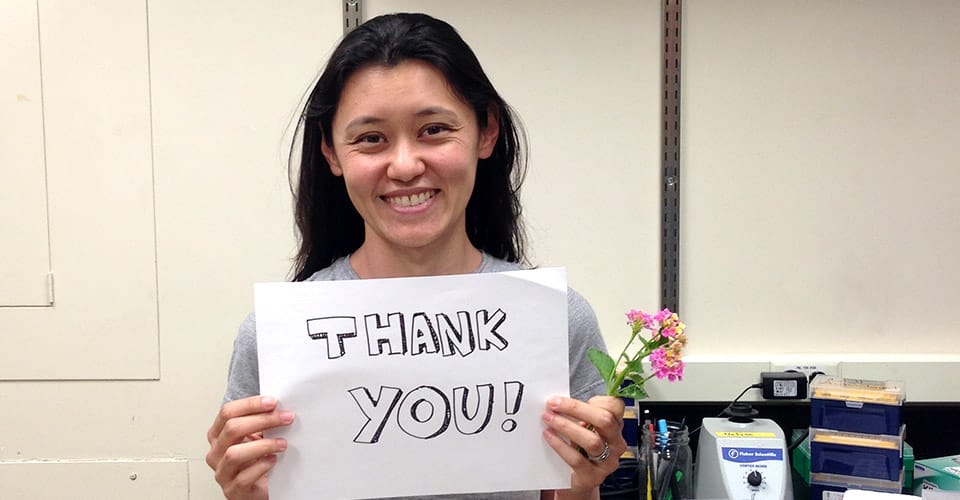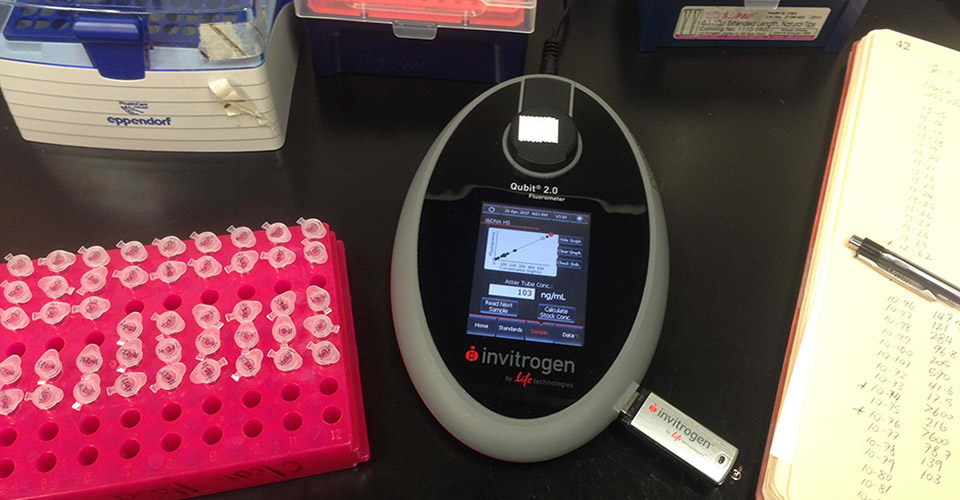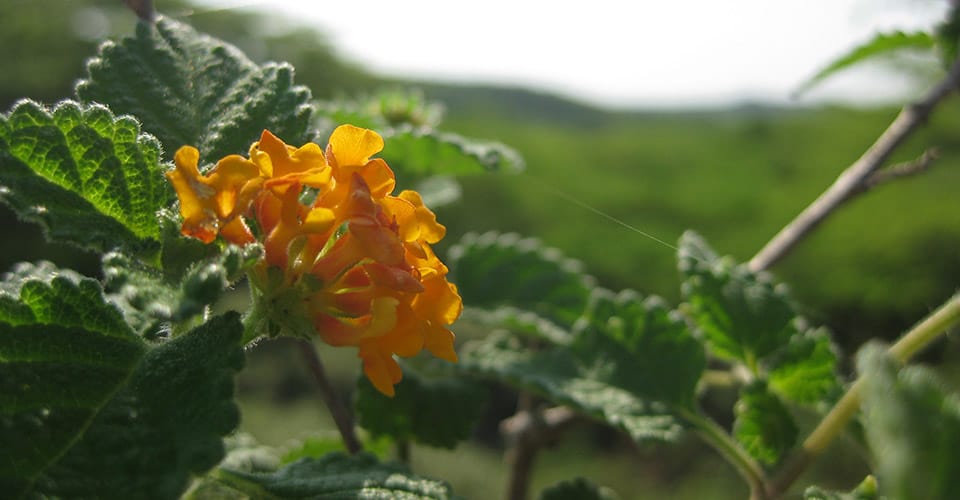This project is now in update mode. Check back regularly to see how things are progressing.
Closing update
Our invasive Lantana origins crowdfunding campaign was a great success, thanks to the generous support of 15 donors. We raised $1,000 for our research into discovering the geographic and genomic origins of invasive Lantana, one of the world’s worst weeds. The campaign has now officially finished, and I want to take this opportunity to thank our donors one more time. Your donations will directly fund us to process up to 100 samples of Lantana DNA from around the world for genomic marker sequencing. Thank you!
Please head on over to ResearchGate to continue following the progress of this project, and see preliminary results once we get our sequencing data! I’m planning to post a project update to our ResearchGate page later this week, once the library preparation is well underway.
A huge thank you again to all! Stay posted via ResearchGate on our project progress and findings!
Over and out,
- Pat
What's next for our project?
As of last week, we are at our funding goal for investigating invasive Lantana origins, and are waiting to begin library preparation and sequencing. I’ll post an update on that next week once I start processing the test samples.
In the meantime, there is still almost a week left before our campaign officially ends. I still can’t quite believe that we were able to raise the funds for our sample processing in less than three weeks! Thank you, again, for your support.
If you or someone you know still wants to make a donation toward our research into invasive Lantana origins, we can absolutely still use your help. Any additional funds raised will go directly toward sequencing our samples, i.e., the cost of running the Illumina NextSeq machine at ASU.
Our campaign page will remain live and continue to accept donations through the official end date of April 9. After that, we’ll go into update mode, and I’ll provide progress updates on our campaign page until we get our first preliminary results. I invite you to continue to follow this project through results, analysis, and (eventually) publication via my project page on ResearchGate.
Cheers!
- Pat
We've reached our goal!
In just over two weeks, we have raised $1,000 toward finding the origins of invasive Lantana!
THANK YOU to the 15 donors who made this happen by contributing to our project! Special thanks to Wailu Zhang, Richard Olmstead, and four anonymous donors for extra-generous gifts in the past week. The response and level of engagement toward this campaign has been really amazing, beyond all my expectations.
We are now fully funded to set up 100 Lantana DNA samples for processing and sequencing. I am really appreciative of your support, and super excited to get to work! All DNA samples have been quantified, and as soon as we receive all the supplies we need, I will go ahead with preparing a sequencing library!
Our first sequencing run will include a small number of samples (around ten): this will serve as a test of our library preparation protocol. Depending on the results of this preliminary run, we may adjust our approach to optimize the quantity and quality of sequence data we expect to generate. I will process the test samples beginning in the first week of April, and they will be sequenced using Illumina NextSeq technology at the Arizona State University’s Core Genomics Facility.
I will continue to provide updates as our research project progresses. Stay tuned, and thank you again!
- Pat

Quantifying Lantana DNA
Since launching this campaign on March 10, we have reached 69% of our project funding thanks to the generous support of nine donors. This represents 69 Lantana samples that we can process for sequencing. Thank you, donors, for your support! I am really happy that our research has inspired so much engagement and interest.
Over the last week, I’ve been working on quantifying the Lantana DNA I collected and extracted previously. It is looking good, with average concentrations of 36 nanograms per microliter; this will allow us to target 500 nanograms per sample to go into processing. I’m aiming to have everything ready to prepare the sequencing libraries in the first week of April.
Below is a snapshot of our quantification setup, and a portion of the DNA samples I quantified earlier.
With spring well advanced here in southern AZ, the Lantana bushes are in full bloom in gardens all over Tucson, providing a colorful display which evokes the morphologic and genetic diversity of the cultivated/invasive complex. I’m excited to get to work on deciphering the ancestral history of these plants!
- Pat

We're halfway to our goal!
We’ve hit 50% of our funding goal in just three days! I’m overwhelmed by your support, and incredibly pleased that you’ve taken such an interest in our Lantana origins research.
Here’s some project news so far:
Last Thursday, I gave a talk on my previous work in the Lantana tribe at the Herbarium lunch seminar at the University of Arizona’s Herbarium. It was a great audience, and I really enjoyed the chance to talk about my research.
This coming week, I’ll be quantifying the Lantana DNA samples we’ll use for sequencing: using a fluorometer to measure the concentration of high-quality DNA. We need to do this to a) check that we have good quality DNA going in to processing, and b) make sure to process the same amount of DNA per sample, so that we ensure even sequencing coverage. After quantifying the DNA, I'll start the process of preparing a sequencing library: this will be directly funded by your donation! I'll keep you posted on our progress, so watch out for regular updates. Thank you again for your support! I want to add a special note of thanks to Jin and Chris Tang, Sarah Moore, and Kok Loong Lye for their exceptional generosity.
I'm excited to get started on the project; please stay tuned!
- Pat
PS. Here's a photo of a wild native plant I sampled in the Dominican Republic, whose DNA will be going into our project under the collection voucher number PLI-12-86:

$10
$10
Your donation will process one Lantana DNA sample for sequencing: one more piece toward solving the puzzle of the invaders' origins! We will keep you posted on the project's progress and findings with regular updates.
$20
$20
With your donation, we can process two Lantana samples for sequencing: a sample from a weedy plant, together with a sample from a wild native plant. Comparing genomic fingerprints between two samples might reveal a match, which would be a big clue in finding the origins of the invaders! We will send you regular project updates to fill you in on our progress and findings.
$50
$50
We can process five samples thanks to your donation! This will allow us to detect patterns in genomic similarity between multiple Lantana populations, helping us trace the pedigree of relationships between the weeds and the native plants. We will keep you posted via updates. We will personally write to you to thank you for supporting us at this level, and give you a shoutout on our social media and research webpages!
$100
$100
You will fund ten samples, a tenth of the entire project! With genomic fingerprints for ten Lantana plants, we can reconstruct a pedigree linking invaders with their wild origins, and begin to assess statistical support for the relationships which emerge. To express our appreciation for this level of support, we will acknowledge you personally in the original research article publishing our findings. We will also cordially invite you to come and visit us in the Ecology and Evolutionary Department for a tour of our lab!




